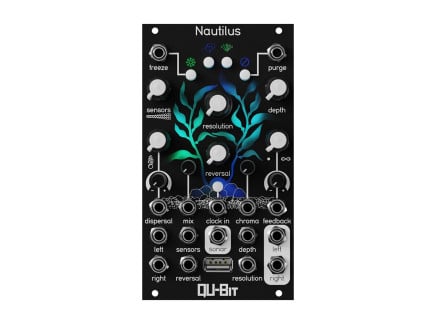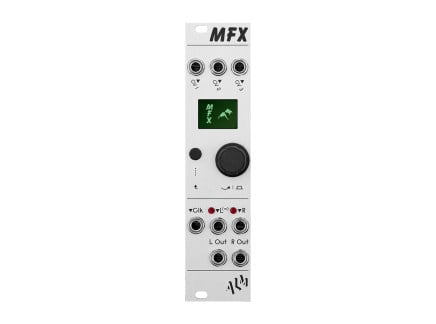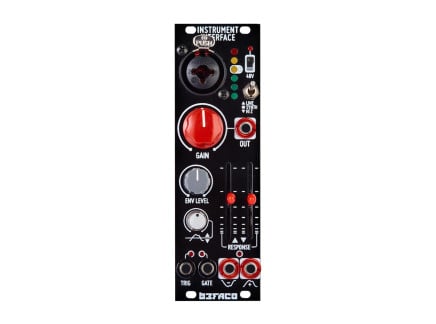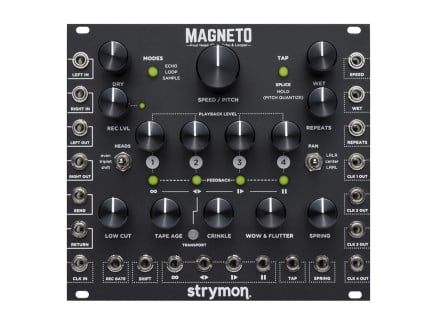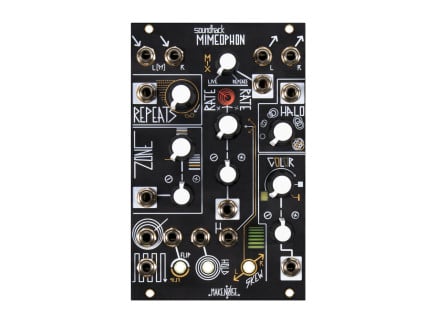Of all the music making gear that's been pulled into the computer over the past couple of decades, effects seem to have been the slowest to re-emerge. Digital effects appear to be pretty happy as plug-ins, and analog emulations have become the norm. If you want to push your music production out of the computer box and onto the tabletop, then the guitar pedal format has been the largest protrusion of effects into real space. These have become a serious tool for much wider applications than the humble guitar. However, I'm going to suggest that there's another deeper and more revealing alternative; the modular synth effects rack.
Eurorack has an unstoppable momentum. It has the power to infect a studio with a tentacle network of patch cables reaching into all sorts of unexpected places. While pedals may be modular with each other, Eurorack is modular within itself, conjuring up unfathomable possibilities at the connection of a cable or twist of a knob. Effects modules within Eurorack are their own sort of animal, offering a different pathway into audio processing and creative sound design.
You'll find all the familiar effects are available as modules, like reverbs, chorus, delay, and distortion. But there are many more with strange and twisted concepts of spectral exploration and granular musings, many with less familiar methods of manipulation. The on/off brutality of the stomp box is replaced with nuanced modulations, low-frequency oscillations transforming delay times, spiking resonance, and folding waveforms. You can sync every tap, every wobble, every reverse to a rhythm that you can endlessly mess with while feeding it back to your entire tabletop orchestration. While plug-ins may benefit from automation and the power of a central CPU, the click of a mouse does not compare to the physical exploratory patching of modulation lines, envelopes and sequences. You don't draw in your changes; you discover them as you go.
How Do You Build a Eurorack Effect Processor?
Building a Eurorack-based effects rack is not unlike building a pedal board of guitar effects, but with some beneficial logistical advantages. Eurorack is compact, neat, and interconnected via a single behind-the-scenes power supply. While pedals take up space with their horizontally plugged full-sized jack cables, modular's front-loaded minijacks use up less room and look stunning and brilliantly messy. The tangle of wires viscerally reflects the cross-pollination of the creative mind; chaos is an asset, do not fear it.

So, let's get practical. What sort of effects modules would make for a good row of modular processing?
You can start quite simply with the safe and familiar realms of the multi-effects processor. The ALM Busy Circuits MFX, for instance, has 14 different effects to play with, or the TipTop Audio Z5000 has 24 algorithms covering the usual suspects of reverb, delay, and pitch change effects. These modules are cost-effective and work in ways you expect them to. However, the essence of modular is most often found in the singular purpose of a module.
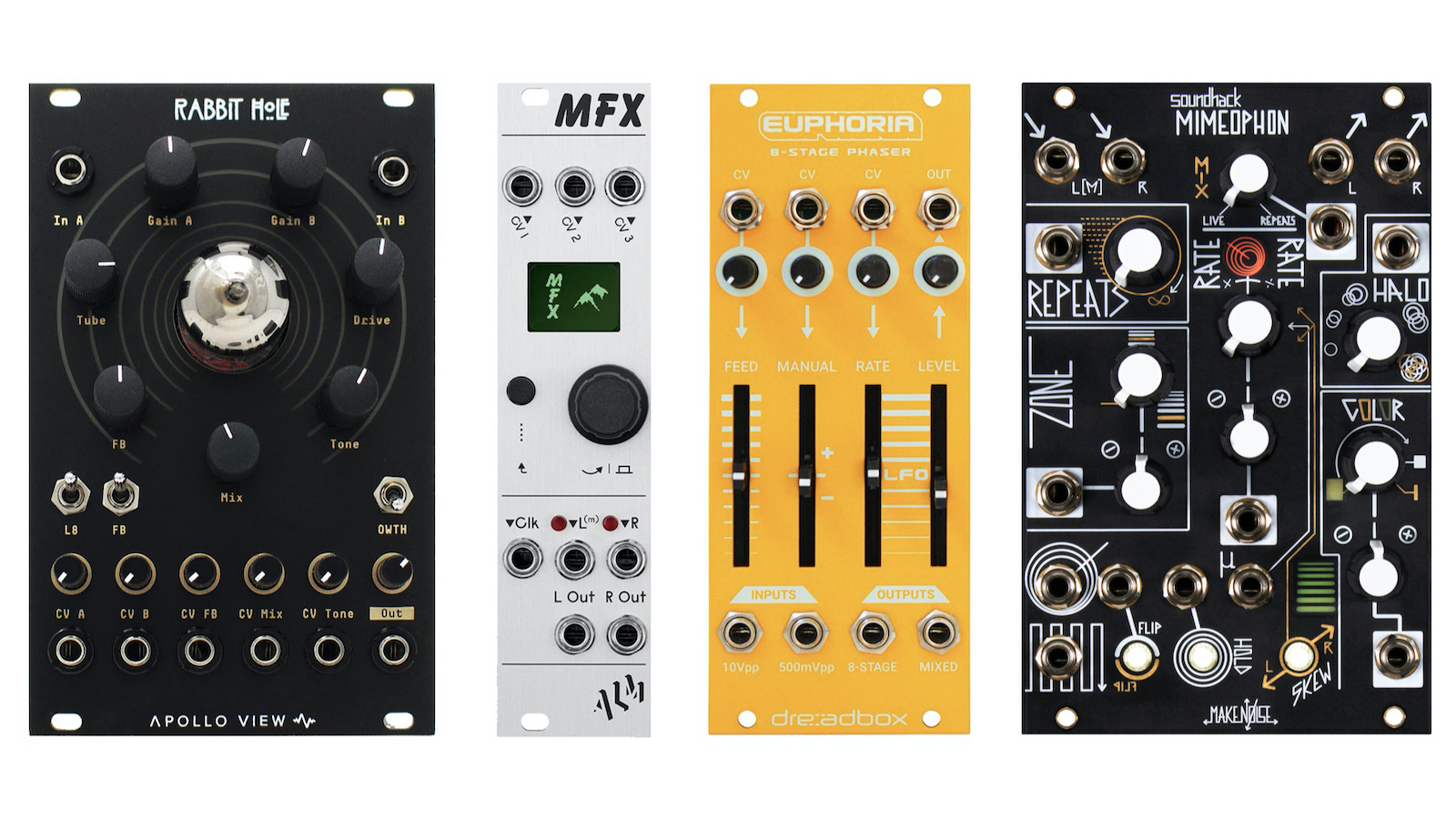
A good value starting point can be found in the Dreadbox Chromatic range of modules. Check out the Nostalgia three-stage delay, Euphoria eight-stage phaser, or Dystopia noise/bitcrusher/filter as good examples. As you expand your view, you'll come across modules like the Alright Devices Chronoblob 2 or Venus Instruments Veno-Echo delay modules that offer more control and deeper adventures. Delays can take a weird turn into the Make Noise Mimeophon audio repeater or Qu-Bit Electronix Nautilus complex delay network. At the same time, granular environments can be found in the Make Noise Morphagene and Instruo Arbhar. Or if you want something fat and raw, the Apollo View Modular Rabbit Hole saturator or Erica Synths Plasma Drive distortion will crunch things up nicely for you.
All these modules share the ability to be messed about and manipulated by voltage. So every row of modular effects needs modulators to take your sounds on a voyage of discovery. From the simple drifting LFOs of the DivKid øchd to the dual-phasing triggerable twang of the TiNRS Wobbler2, from multiple envelopes of the Nano Modules Quart to the mysteries of the Make Noise Maths, there are stacks of modules that can patch in and change the whole story.
Before you know it, effects are no longer something you turn on or off. They become a creative expression of your search for tone that you can manipulate as you forage for sounds.
Practical Considerations: Signal Levels
Wouldn't modular effects only be suitable for modular synths? No, not at all. Sure, modular enjoys its own ecosystem of sound generation, but just as you can use guitar effects on synths, there's no reason why you can't return the favor with modular.
Eurorack audio is notoriously hot, and you'll need an interface module to bring your guitar signal, microphone or line-level synthesizers up to the right sort of levels. The Befaco I4 Instrument Interface is particularly good for guitar and microphones. It has phantom power, metering, and a large gain and will even extract the envelope from your input to use as a modulator. The Joranalogue Receive 2 has twin mic or line inputs with up to 40dB of gain for mono or stereo signals. The Boredbrain Injectr comes with cabinet simulation and a four-diode saturation circuit for an awesome guitar-focused input module. For something dead simple, the two-channel Befaco Inamp will take line-level synths or guitars with humbucker pickups to the perfect Eurorack level. If you want to use the modular as an effects loop and bring your guitar back out to your amp, then the Boredbrain unifx will do precisely that.
So, what would a workable, modulatable, guitar-pluggable, kick-ass row of modular effects look like? Well, it can look like anything; it can be whatever you want it to be because it's modular. While that's true, it's also terribly unhelpful. So let me pull together a practical example. Let's assume that I might use synth or guitar and want to get lost in the beauty of ambient mysteries, but I might also want to transform a bassline into something epic. We'll also start from scratch, without any other modular patching itself in.
I'll start with an 84HP NiftyCase from Cre8audio. It has an internal power supply, so we're not losing any space for a power module, and an integrated output, so we won't need an output module. We're already winning at this!
For my synth and guitar interface, I'm going to use the Befaco Instrument Interface. It's a really great and straightforward module that will give me envelopes, triggers and gates in response to my input that will work brilliantly with the effects. From there, I'm going work in the dirt with the FIL4 Timbral Sculptor filter/waveshaper from Future Sound Systems. It has a lot of scope for aggressive sounds, unhinged overdrive and self modulation as well as having a choice of filters. For cleaner sounds, the Tiptop Audio MODFX will do nicely with its chorus and flanger and has an interesting filter for phasing and vocal sounding effects.
On the ambient side, you've got to start with a delay and the godfather of multi-head time dimensions is the Magneto from Strymon. It has four heads for endless echos, looping, and tape deterioration emulation. But it's huge and takes up a load of room in your rack. So instead, I'm going to pair up a couple of modules from Qu-Bit Electronix. Nautilus is a strangely deep delay with a sub-nautical theme, whereas Data Bender introduces some delicious glitches to any situation. I'm rounding it off with a reverb with the Noise Engineering Desmodus Versio. It's deeply interesting and very explorable and has exchangeable firmware. This means if you get bored of the reverb, you can make it do other things.
For modulation, which is vitally important, I've started with the Tenderfoot Clk. It generates a clock signal and variations which are perfect for keeping all the modules together in time. Then I've added the Clep Diaz modulation generator from Noise Engineering. It can produce stepped sequences, random voltages and a solid LFO. It could find itself patched all over the place. And lastly, the Krait from Dnipro Modular is a three-channel modulator where you can record your own knob movements and dial-in modulation. It's a stunningly useful module.
That is one heck of a row of effects. And, of course, it's completely reworkable, changeable, swappable and evolvable. You could easily drop the Data Bender and add more modulation, or switch out the FIL4 for a different filter and saturation module. Or simply widen the case or add another row or just start with the Instrument Interface and one effect. You can patch in a single module and add a slow LFO to a parameter of your choice. Or you can work your audio through the lot with cascades of oscillations, pulling and pushing at knobs and possibilities. There's so much fun to be had in here.


